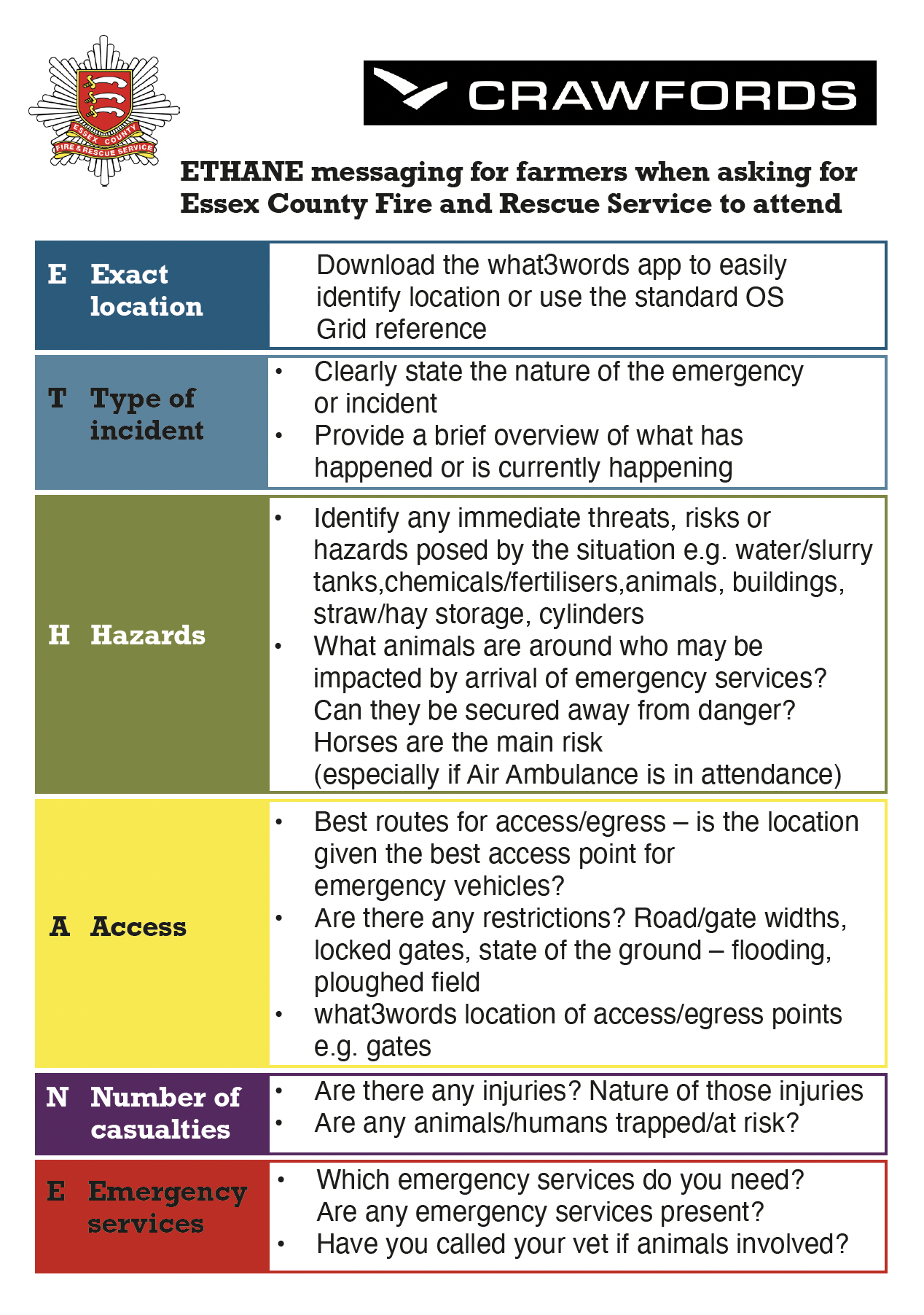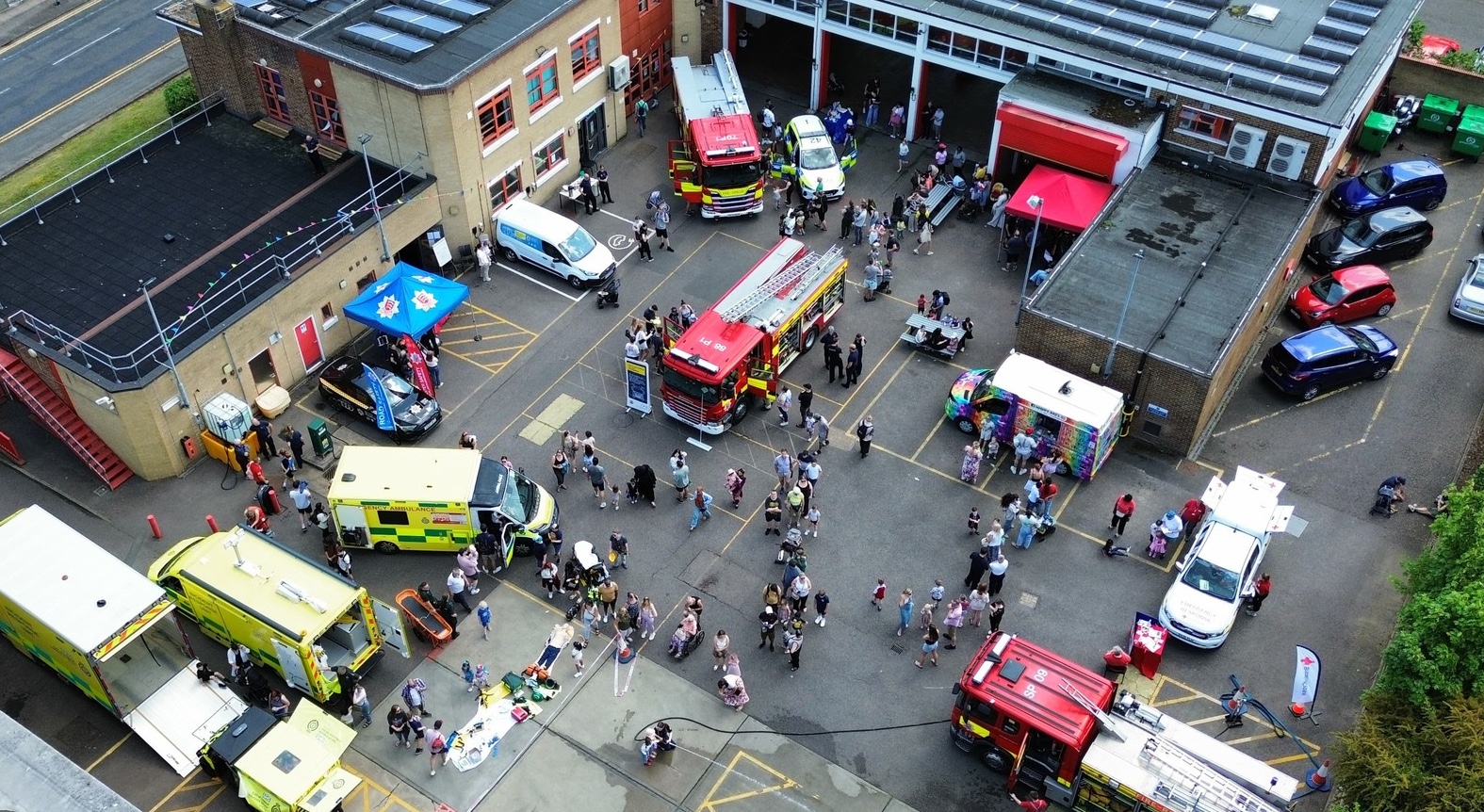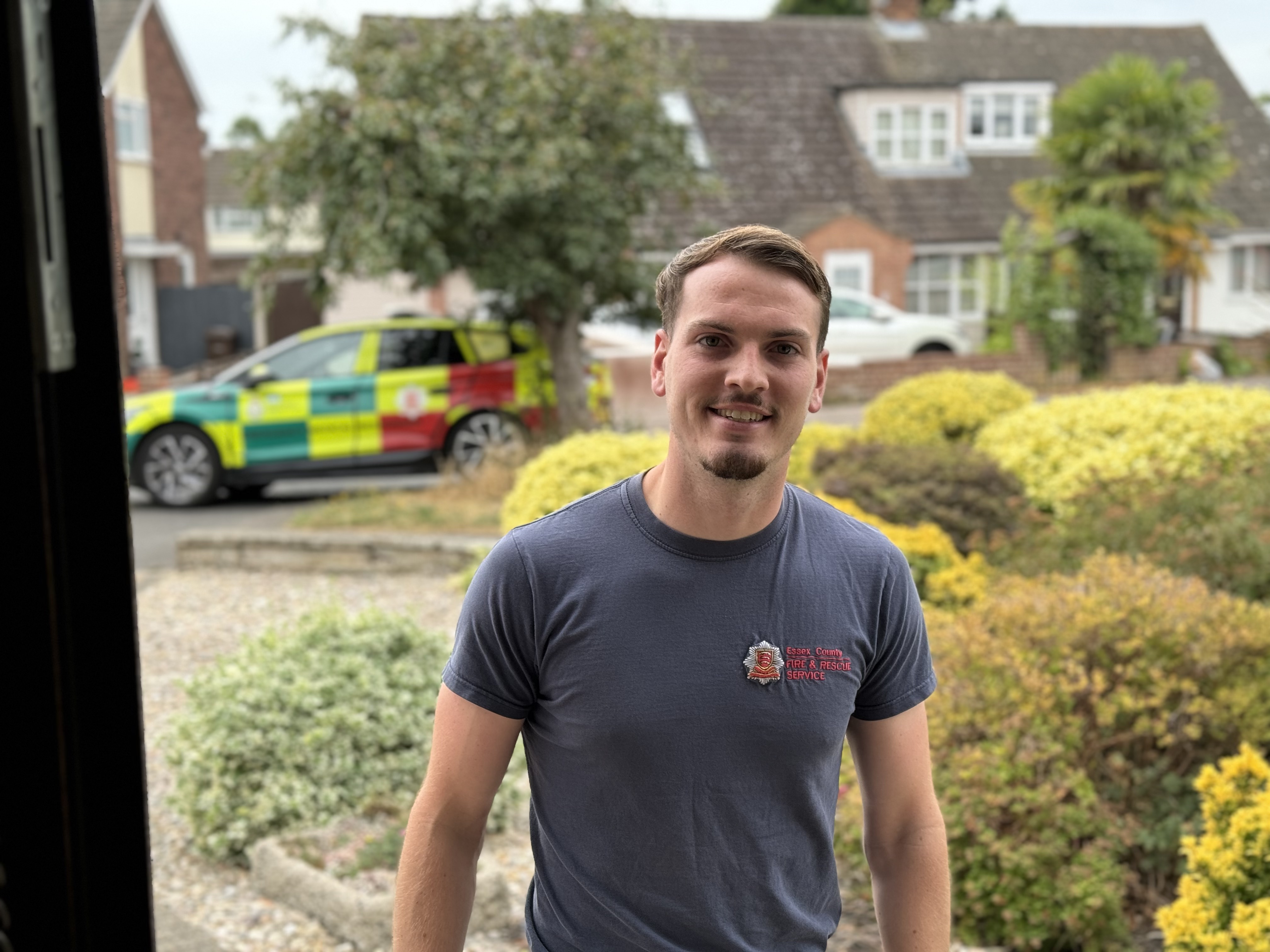
ETHANE messaging for farmers when asking for Essex County Fire and Rescue Service to attend
If you need us to visit your farm in an emergency, we've prepared a list of things to consider to help us help you as best as we can.
If you need us to visit your farm in an emergency, we've prepared a list of things to consider to help us help you as best as we can.
Please see a PDF version of our ethane messaging for you to print here.
| E - Exact location |
Download the what3words app to easily identify location or use the standard OS Grid reference |
| T - Type of incident |
|
| H - Hazards |
|
| A - Access |
|
| N - Number of casualties |
|
| E - Emergency services |
|


